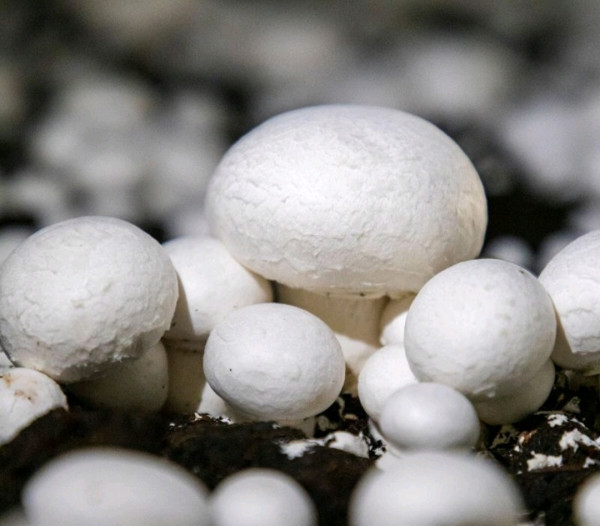스트로마(Stroma) 란?
본문
스트로마(Stroma),
버섯 재배에서 발생하는 비오염성 질병
균사체는 케이싱 토양 표면의 조밀한 층에서 압축되며 이를 기질이라고 합니다. 그것은 많은 구성원에 의해 형성된 단단한 균사체(전형적인 균류의 몸을 형성하는 필라멘트 덩어리)의 쿠션 같은 판입니다.
때때로 산란 생산 중에도 발생하지만 일반적으로 재배의 첫 번째 플러시에서 더 많이 나타납니다.
외관상, 균사체는 풍부하고 패딩 된 구조를 가지고 있으며 회백색 또는 갈색을 띠며 케이싱 토양의 표면에 나타납니다.
이러한 균사체 패치는 그 아래의 가스 교환 경로를 차단하는 큰 표면으로 빠르게 조립될 수 있습니다. 이 지역에서는 일반적으로 버섯 몸체가 형성되지 않습니다.
원인은 명확하지 않습니다.
- 유전적일 수 있습니다.
- 재배실의 높은 CO2 수준과 낮은 상대 습도는 기질을 유발할 수 있습니다.
Stroma, a non-contaminant disease in mushroom cultivation
The mycelium compresses in a dense layer on the surface of the casing soil and it is called a stroma. It is cushionlike plate of solid mycelium (masses of filaments that form the body of a typical fungus) formed by many members. Occasionally it also occurs during spawn production, but typically appears more in the first flush of cultivation.
In appearance, the mycelium, which has a rich, padded structure and is off-white or brownish, appears on the surface of the casing soil.
These mycelium patches can quickly assemble into a large surface that blocks the gas exchange path beneath it. No mushroom bodies are typically formed in these areas.
The causes are not clear:
- they may be genetic,
- high CO2 levels in the growing room, combined with low relative humidity, can cause also stroma.
버섯 재배에서 발생하는 비오염성 질병
균사체는 케이싱 토양 표면의 조밀한 층에서 압축되며 이를 기질이라고 합니다. 그것은 많은 구성원에 의해 형성된 단단한 균사체(전형적인 균류의 몸을 형성하는 필라멘트 덩어리)의 쿠션 같은 판입니다.
때때로 산란 생산 중에도 발생하지만 일반적으로 재배의 첫 번째 플러시에서 더 많이 나타납니다.
외관상, 균사체는 풍부하고 패딩 된 구조를 가지고 있으며 회백색 또는 갈색을 띠며 케이싱 토양의 표면에 나타납니다.
이러한 균사체 패치는 그 아래의 가스 교환 경로를 차단하는 큰 표면으로 빠르게 조립될 수 있습니다. 이 지역에서는 일반적으로 버섯 몸체가 형성되지 않습니다.
원인은 명확하지 않습니다.
- 유전적일 수 있습니다.
- 재배실의 높은 CO2 수준과 낮은 상대 습도는 기질을 유발할 수 있습니다.
Stroma, a non-contaminant disease in mushroom cultivation
The mycelium compresses in a dense layer on the surface of the casing soil and it is called a stroma. It is cushionlike plate of solid mycelium (masses of filaments that form the body of a typical fungus) formed by many members. Occasionally it also occurs during spawn production, but typically appears more in the first flush of cultivation.
In appearance, the mycelium, which has a rich, padded structure and is off-white or brownish, appears on the surface of the casing soil.
These mycelium patches can quickly assemble into a large surface that blocks the gas exchange path beneath it. No mushroom bodies are typically formed in these areas.
The causes are not clear:
- they may be genetic,
- high CO2 levels in the growing room, combined with low relative humidity, can cause also stroma.
